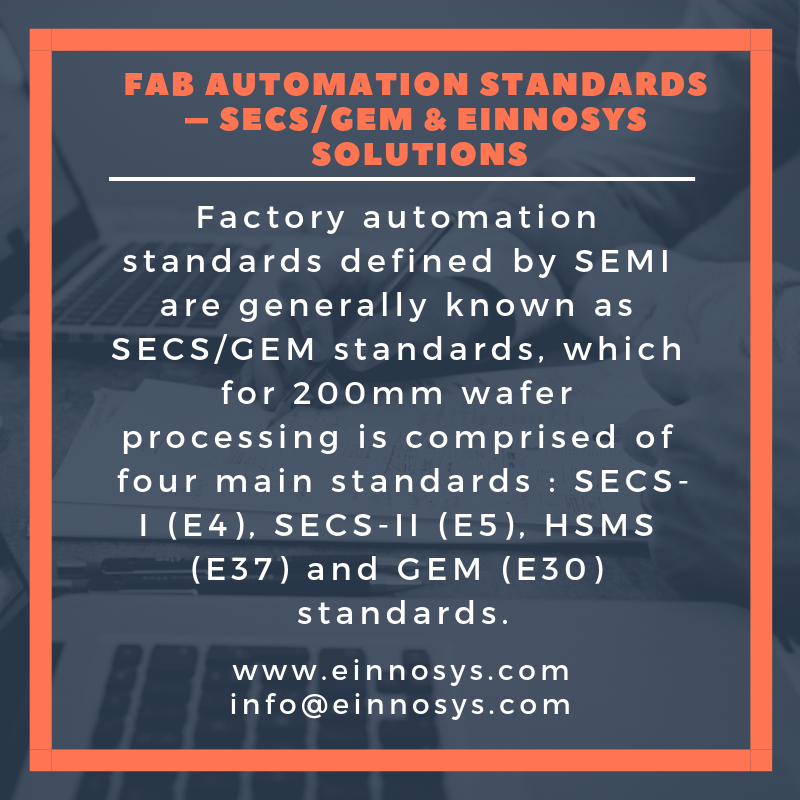
The organization that defines and governs the standards for semiconductor manufacturing, equipment, automation and other relevant areas is SEMI.org. It is an international body for semiconductor manufacturers and equipment manufacturers.
Factory automation standards defined by SEMI are generally known as SECS/GEM standards, which for 200mm wafer processing is comprised of four main standards : SECS-I (E4), SECS-II (E5), HSMS (E37) and GEM (E30) standards.
Lets understand what each standard covers:
- SECS-I (E4) : This standard is a communication protocol based on RS-232 serial communications. This is a much slower as compared to HSMS.
- SECS-II (E5) : This standard defines how information is passed between an equipment and a factory host in the form of a series of stream and function messages.
- HSMS (E37): This standard defines a communication protocol based on TCP/IP.
- GEM (E30) : This standard not only defines how to use the core SECS-II messages to perform particular tasks, such as event report, data collection and recipe management but also takes care of the behaviour of the equipment when interfacing with the host.
Since SECS/GEM is a communication protocol, it is technology, platform as well as programming language independent. The host side of a connection is run on a computer system typically provided by the fab, and the equipment side of a connection is executing on a controller computer provided by the equipment manufacturer. This gives both – the factory as well as the equipment manufacturer interoperability, flexibility and platform independence. Both, the fab and the OEM can develop their software application without having to worry about communication compatibility, as long as they both are adhering to SECS/GEM standards.
SECS/Gem standards define the communication between a host computer and the equipment typically using a single connection, however multiple connection from more than one automation systems to a single equipment is possible. The message types defined by SECS are partially asymmetric – some message types are defined only for equipment use, others are defined only for host, but also many of the messages are for the similar use on either side.
The practice of connection sharing is not recommended for new deployments. It is a prevelant practice that a connection is maintained for long periods of time and only interrupted if the equipment or host is rebooted. SECS connections are light and don’t use much network bandwidth. It is possible to run several SECS connections on a simple desktop computer.
Most Semiconductors, solar cell, FPD and LED manufacturing factories are demanding the equipment that is SECS/GEM standard compliant. For those who are not familiar with SECS/GEM standards, to learn and implement these standards on the equipment software can be quite complex, challenging and time-consuming. That is why we at eInnoSys offer SECS/GEM software solutions for equipment manufacturers as well as factories. Integrating eInnoSys’ EIGEMEquipment plug-n-play software with equipment controller software of equipment, OEMs can significantly reduce the time and cost it takes to make their equipment SECS/GEM compatible. Similarly, EIGEMHost is a SECS/GEM software for FABs and ATMs (Assembly and Test Manufacturing) to communicate with various equipment in the factory. EIGEMSim is a simulator software for SECS/GEM testing. It is a software that can be used to simulate as equipment or host to test SECS/GEM communication of the other.
